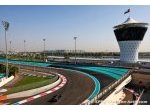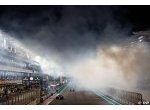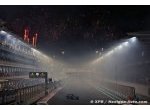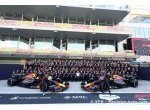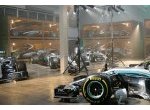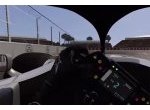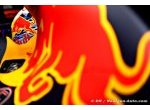Germany 2016 - GP Preview - Renault F1
Team quotes
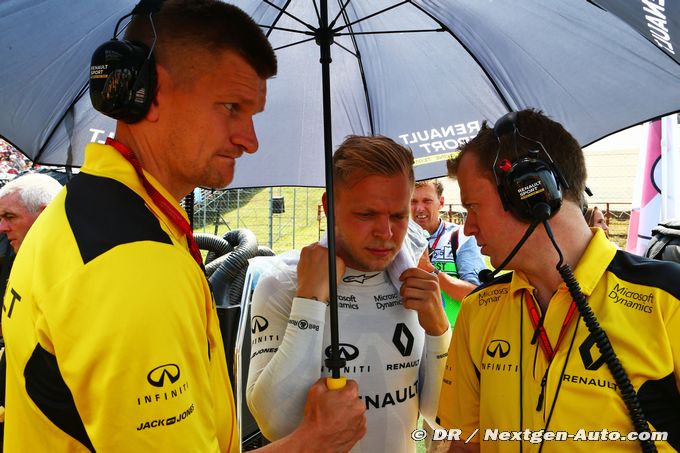
Cyril Abiteboul, managing director
We now go to the final race of the first part of the year with our plan back on track. We knew that the first races would be about recovery and setting the foundations, but we had a tougher ride than expected. However in Budapest we demonstrated that we had taken a tangible step forward, not just in our own performance but in relative performance to our rivals. In the race we were able to out race Haas, Sauber and even Force India and Jolyon was just a sniff away from his first points.
Now the task for Hockenheim is translating the extra pace we’ve unlocked into the points we just missed in Budapest. We’re making progress and the benefits of a strong result in the German Grand Prix would be welcomed by everyone at Enstone and Viry.
For the rest of this season, our goal is to attack the teams ahead, using new aero parts developed since the beginning of the season and marginal evolutions of the engine to stay in the same pace as our competitors, despite our focus on 2017.
Frédéric Vasseur
A strong race from both drivers in the Hungarian Grand Prix followed a frustrating qualifying session where conditions and red flags conspired to deny the demonstration of the new-found pace in the R.S.16. Team Principal Fred Vasseur gives his take on Hungary and his hopes for Hockenheim.
What’s the target for the German Grand Prix?
It’s always the same; we need to deliver our very best at every level. We saw extra pace in our car in Hungary so we now need to translate that to the points potential we had last weekend.
Were you surprised at the jump in relative performance in Budapest?
I know how hard everyone has been working so I cannot say I am surprised when we show progress. Equally, we know that some tracks, some conditions will suit some cars better than others so we’re not jumping for joy that we’ve found a magic bullet. We could arrive at Hockenheim and find our rivals are doing a better job; we’re doing everything in our power to ensure we deliver as best we can but this is a highly competitive environment with grid positions separated by tiny fractions of a second. From our side, we all have our heads down trying to find every bit of performance for this year and beyond.
Could the team have achieved more in Budapest?
Yes and the nature of motorsport means it’s very seldom that any team delivers the absolute maximum that is possible. Qualifying was frustrating as we had a quick car as shown by our morning pace, but the conditions of qualifying and the red flags didn’t work for us. Of course, we always go over any qualifying session to understand how to get more in similar circumstances if faced with the same scenario again and that is how we improve. In the race both drivers experienced issues; Kevin lost out at the start and Jolyon had a spin from a good position. We’re looking at both of these situations to understand what happened and prevent that happening again.
When will you decide on the driver line-up for 2017?
We are at that time of year when we are asked these questions, but the questions and the speculation often happen before any decision is made. What I can say is we have two good drivers, who are improving weekend after weekend. Let’s not forget that Jolyon is a rookie and that Kevin only had one year driving full-time at McLaren then a year not racing. They are both doing a strong, solid job and work very well within the team. I have a strong relationship with them both and they know what is expected of them. Within the team we are very happy together. We will make our decisions for 2017 in our own time.
Kevin Magnussen
Renault Sport Formula One Team’s resident Dane Kevin Magnussen wants to be moving on up in Hockenheim.
What do you think of Hockeinhem?
It’s a great track and the atmosphere there is always awesome. Turn one is very fast and it’s a great way to start what is always an exciting first lap. It’s difficult; you can gain or lose a lot of positions there depending on whether you have a good or bad exit. Do it well and you’ll make up a lot of places down to the next corner. Mess it up and it will be the exact opposite.
There’s good overtaking opportunities down the long straight as well and a massive braking zone, perhaps the biggest one in Formula 1. It’s similar to China in that way. Then the final sector where the circuit goes from being quite wide to being a really old school narrow track and there is a very banked corner, which always makes it quite cool to drive.
What about the old track, ever wish you could have had a go?
I would have loved to have tried that. Anything that’s extreme, I like. The long straight they used to have, the speeds you would be able to reach in our cars… It would be ridiculously fun.
The German Grand Prix is the last race before the shutdown, any plans?
I will be enjoying taking the break day by day, at home in Denmark, and trying to relax with my girlfriend and my dog. The second half of the season is pretty intense with a lot of travel so it’s good to recharge the batteries mentally and physically.
How would you review your season so far?
It’s been a tough season for the whole team but it’s also the start of a big project and a very exciting time to be here. Everything is being rebuilt and growing; the foundation has been set for the future. So I would say I’ve had a very enjoyable year so far and I’m sure it will continue.
Being part of the Renault factory team is fantastic. There are three factory teams in Formula 1 and to be part of one of them is huge. Yes, we are not delivering what we want on track at the moment but we knew that would be the story of this year. We are aiming to be performing in the future, obviously we do our best with what we have now, but I’m sure we’ll see big things from us in the future.
How do you review your Budapest weekend?
The positive thing from Hungary is that we were able to fight higher up the field. We were in there with both Haas and one of the Williams, the car felt better all weekend, and hopefully we will be able to carry this into the season. The work we did at the Silverstone test days clearly improved the car and I think this is something that will help us more at slow-speed tracks rather than high-speed circuits, but it’s certainly encouraging.
Jolyon Palmer
Were it not for a contretemps with Turn 4 on lap 47 of the Hungarian Grand Prix Jolyon Palmer would be heading to Germany with his first Formula 1 points in his pocket. No matter, Hockenheim offers another opportunity.
Firstly, so near yet so far; what happened in Hungary?
It’s painful to look back on. I was well-placed in P10, I had the pace on those around me and I was driving really within myself. I wasn’t exactly hanging anything out and hadn’t had any big moments, everything was under control but then I lost the car in Turn 4. It’s difficult for me to understand why. I hadn’t experienced oversteer the whole race in that corner and then I turned in and lost the car completely. I had a massive snap and then I was pointing backwards.
Aside from that one moment, how was the rest of the Budapest weekend?
The weekend was perfect apart from that one corner. It was easily my best race ever. The strategy was really good. The pit stops fantastic. Everything came together. The good news is that we didn’t luck into our performance, which shows we have the pace and can do it again. We’ve made a big breakthrough so I think it will carry on for another couple of races. My first F1 points were there for the taking in Hungary and I didn’t take them. I’m very eager to redress that situation in Germany.
What are your thoughts on Hockenheim?
It’s a circuit I haven’t raced at so much, as I’ve raced there only for two weekends previously. The two big features that stand out are the very long straight and the stadium section. Despite the changes to it over the years, it still has a really old-school feel to it, especially the arena section, which is very narrow and how close the fans can be there as well. It has a really nice flow, especially the second half of the lap, and a lot of slow and medium speed corners, which I quite like.
Do you enjoy racing in Germany?
There are a lot of passionate fans who come from all over the country and they really know how to enjoy the weekend. The campsites can be quite something to behold. It’s the last race before the August break so I may well treat myself to a nice German beer on the Sunday night.
Nick Chester
The boost in relative performance shown in Budapest comes from the hard graft in Enstone and Viry. Technical Director Nick Chester explains the challenge to maintain momentum at the Hockenheimring.
The team seemed to make progress on pace in Hungary? How was this achieved?
There are a number of factors to be optimistic about after our visit to the Hungaroring. We were in a position to get a point for Jolyon on pace and it wasn’t a race of attrition so it was a genuine performance.
We have found quite a lot of this pace in the car both from new components and from different approaches to set-up. We learnt a lot at the Silverstone test and this is filtering through. We’re certainly getting a better balance with the car to use the tyres more efficiently and we’re also making improvements in low-speed and medium-speed corners. The race pace showed that FP3 was not an illusion.
Is there more to come?
We have further advances in the same direction. There are a few more parts to go on the car and we’re learning at every race so we would like to see some further improvement.
What’s the technical approach to Hockenheim?
It is a combination of low and high speed corners but also with some decent straights. The low and medium speed stadium section is key to a good lap time. The downforce levels are more familiar than the extra high levels of downforce we used in Hungary,
We’ll be working on trying to generate grip in the low speed corners. To do this we look at the mechanical and aero sides of the car. Mechanically it’s about how you balance the car, how you proportion the stiffness in front and rear suspension and how you set it up to get a good mixture of the car being stable and having enough front end for the low speed corners. Aerodynamically it’s about adding downforce to the car which works in the low speed corners where the car has higher rideheights. We are going to have a few new parts to try which should give us some benefit too.
What’s the potential in Hockenheim?
The outlook is fairly similar to a lot of other places. The requirements are not hugely specific and the most similar requirements from a recent circuit would be Austria. We expect a fairly similar outlook to there plus the added performance we’ve managed to unlock from the car.
How far advanced is the 2017 programme?
Most of our departments are focused on 2017; we have a strong wind tunnel programme, we’re refining the car layout, the schematics are all in progress for the car. It’s a massive change for 2017 with a wide car, wide tyres, a completely different aero package, the loadings into the chassis are different, the power unit is different, the layout at the back of the chassis is different; there’s a tremendous amount of work to be done. It is a very exciting challenge and very motivating for the design team
Circuit notes
T2 – a stable car under braking is needed into Turn 2 to allow a clean exit and strong traction on to the fastest part of the track.
T3-T4 – good change of direction demanded from the car with the rear end settling nicely on the exit of the latter to enable good acceleration on to the straight.
T6 – an important corner with drivers braking from high speed into what is the slowest corner on the circuit. Strong traction required on exit.
T7 – taken at high speed, flat out with low fuel but slightly more tricky with heavy fuel loads.
T10 – off camber and a challenge to get right. Towards the end of the race it can be taken almost flat out with a good car but it’s far more of a challenge with a heavy car.
High downforce required through the low speed stadium section of Turns 12 to 17, this section is narrow meaning overtaking is difficult.
Power Unit notes
Approximately 65% of the lap is spent at full throttle thanks to the four long straights. The Parabolika straight is over 1km long, putting it on a par with the longer straights of the season in China and Abu Dhabi. Power units will spend over 14 seconds at full throttle, one of the longest single outright times of the year.
Drivers will reach over 290kph on three occasions (or over 300kph on two occasions) during the first two thirds of the lap. The ICE and turbo are therefore subject to heavy loading.
Energy recovery under braking is relatively easy since the straights are linked by medium to low speed corners such as the Hairpin and the old Stadium complex. This is good news as far as carbon fuel consumption is concerned.
The latter part of the lap, which includes a slow 60kph hairpin, a right hand flick and then the renowned stadium section, is taken at a much lower average speed than the first part of the lap. The tight, twisty nature of this part of the track demands good braking stability and engine torque response, particularly through the stadium, which is taken at an average of 200kph.
With such large loads going through every part of the Power Unit, everything will get very hot. High ambient temperatures will only compound this challenge. To prevent against any potential overheating issues it is likely teams will run a different cooling configuration and use the PU elements in a slightly different way.
